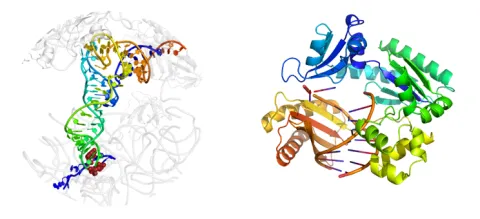Wetmore Group
The Wetmore lab models the structure and reactivity of nucleic acids using a range of computational (bio)chemistry techniques. Our calculations provide a foundation for experimental approaches by serving as powerful predictors of experimental outcomes and clarifying discrepancies between experimental hypotheses and results. Accurate molecular modelling makes it possible to explore atomistic details that are simply unavailable at the experimental level. When this approach is directly used to complement traditional experiments, examinations that seem impossible with conventional methods are suddenly achievable. For example, calculations can be used to complement traditional experiments to explain observed reactivities or guide novel experiments by assessing the probability that a molecule will exhibit a desired trait. Due to the many improvements in computing power and computational methodologies, molecular modeling has become an important tool for biochemical research.

Computational techniques are used in the Wetmore group to study a range of projects related to the chemistry of natural and synthetic modified nucleic acids. mRNA (messenger RNA) became a household name during the COVID-19 pandemic. The successes of mRNA vaccines were made possible by the introduction of modifications to canonical RNA components. Modified nucleic acids have also been designed for other uses in medicine and nanomaterials. RNA is also highly modified in nature, with enzymatically-incorporated modifications having been linked to development, health and disease. Research in the Wetmore lab uses computational methods to elucidate the roles of RNA modifications in nature, the function of synthetic components used in RNA-based technologies, and the mechanisms used by enzymes to control RNA modification status.
